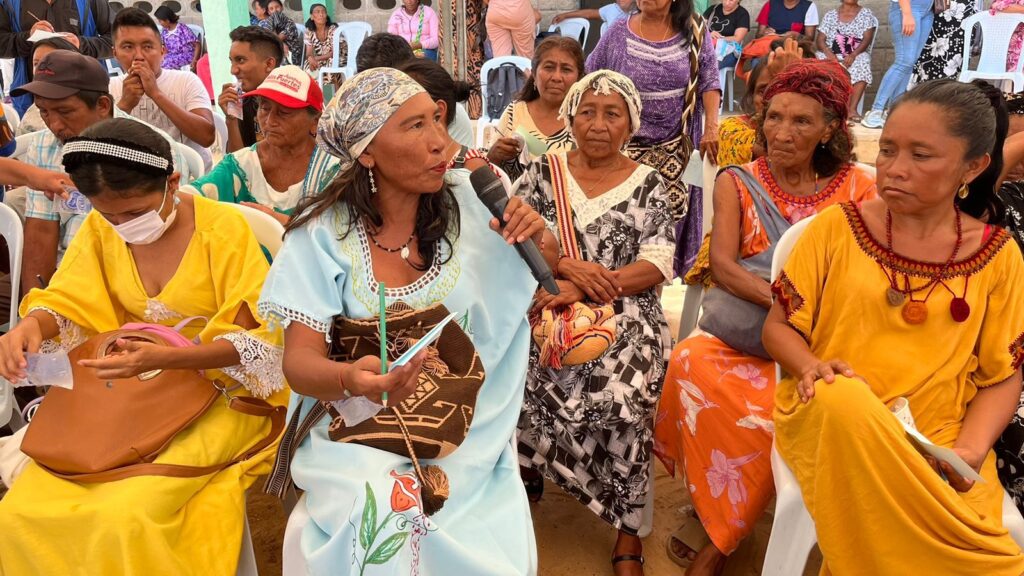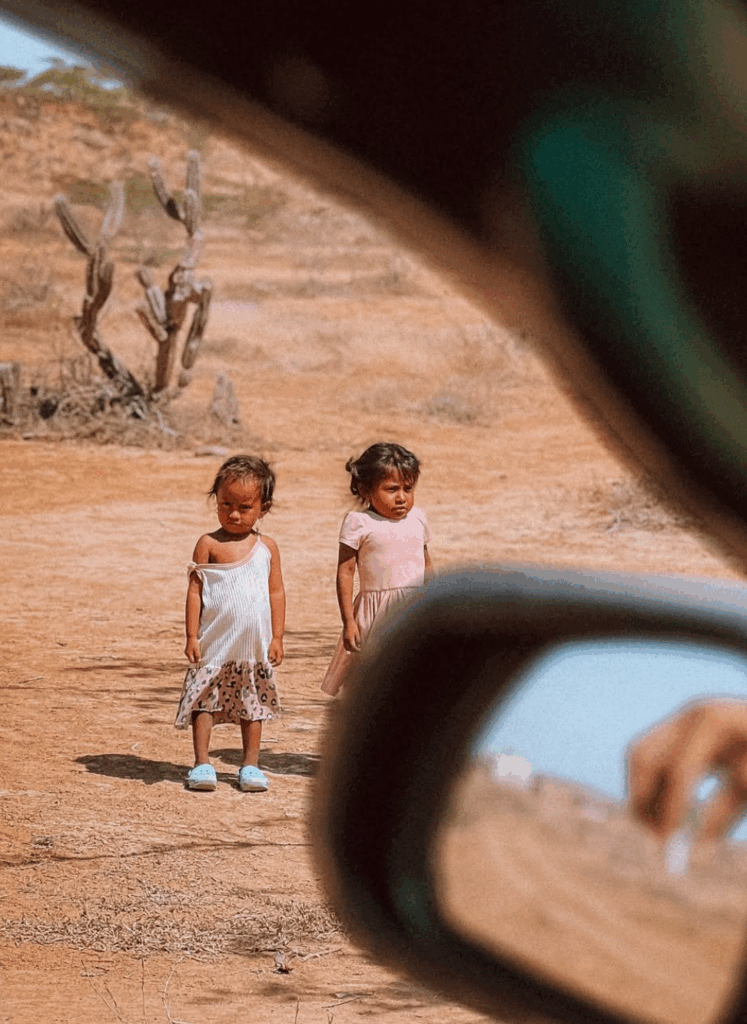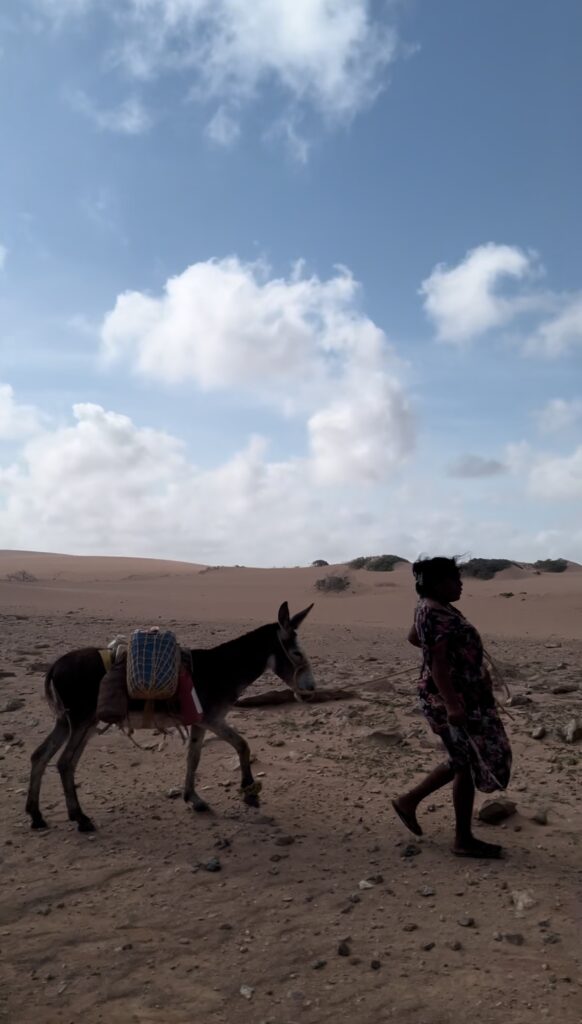La Guajira, Colombia – Recurrent droughts and extreme weather conditions will continue to endanger Colombia’s northern La Guajira department. Here, existing atmospheric patterns and global warming collide in increased climate variability and extremity, affecting the lives of hundreds of thousands of Indigenous Wayuu peoples.
Native to the Guajira Peninsula, which stretches across northern Colombia and northwestern Venezuela, the Wayuu are Colombia’s largest Indigenous group.
Known for their strong cultural identity, resilience, and unique matrilineal social structure, the cross-border presence of their 438,000 members makes them one of the most culturally and politically significant Indigenous communities in Latin America. Yet, a 2020 report by Human Rights Watch (HRW) featured the Wayuu, and in particular their children, as casualties of climate change in the previous decade.
Prolonged droughts and unprecedented high temperatures have exacerbated water and food insecurity in the region, resulting in figures that stretch far beyond national averages.
In 2024, Colombia’s statistics agency DANE and the UN World Food programme found that over two thirds of La Guajira’s population experienced moderate to severe food insecurity, according to Colombia Reports.
Wayuu children are particularly and disproportionately at risk, with the UN”s Office for the Coordination of Humanitarian Affairs in Colombia (OCHA) reporting 2,872 cases of severe acute malnutrition and 71 deaths in children under five in 2023, constituting a third of the national total. Further, the scarcity of clean water has paved the way for the spread of infectious diseases.

Image credit: ICBF.
“What I wish for the future is my community’s well-being, and for us to be healthy and for children not to die. You know, children are dying too often,” said Iveth, a 16-year-old Wayuu boy, in conversation with Save the Children.
Five years on, the anxieties described by HRW can be traced in the cracks of the desert region. Today, the Wayuu must trade their privacy and independence for survival in extreme weather conditions worsened by the impacts of climate change.
Latin America Reports travelled to the region and interviewed Mario de Jesús Agresoc González, a tour guide of Wayuu heritage who led our three-day journey from Rihoacha, La Guajira, with a stop in Cabo de la Vela, before reaching our final destination of Punta Gallinas.
The journey was undertaken in an all-terrain vehicle loaded with bags of rice, coffee and water – one of three that leaves capital city Riohacha every day for resource distribution among the region’s population, especially young children at checkpoints. Agresoc González explained the recent hardships faced by the Wayuu communities living along the desert route.

“As for the Wayuu that are asking for these things, this has been going on for approximately eight years,” he stated.
In recent years, the Wayuu have had to become dependent on tourist routes- including the one Mario operates- to receive food that no longer grows in the region because of changing weather patterns, he added.
“When the rainy season arrives, they try to plant things. And sometimes, God willing, corn, beans, watermelons and melons are produced,” he said. But the scarcity of rainfall continues to complicate these practices for the Wayuu, for whom agriculture has increasingly become more of a lottery than a means of subsistence.
“Here, water in these areas is sacred… water over here is gold,” the guide expressed.
Mario explained that the small packets of water that we delivered to children at each checkpoint would have to be strictly managed amongst the community because “fresh water can’t be found.”
When asked what additional help was available to the Wayuu, Mario claimed that there was not enough support reaching the remote areas many members of the Indigenous group inhabit.
“At the moment, the Wayuu are suffering a lot because Colombia as a whole doesn’t have the resources needed to help all those Wayuu families who truly need it,” he said. On the route, the only food and water deliveries made were those orchestrated daily by local tour companies, Mario explained.
While La Guajira has been earmarked for massive wind farm projects, the same urgency hasn’t been extended to addressing its chronic lack of drinking water and food, needs that grow more critical as climate conditions deteriorate.

Wayuu communities can be characterized by their historical self-sufficiency, with livestock herding, dryland farming of crops, and fishing being completed manually despite the digitization of agriculture and the spread of high-tech farming tools across much of Colombia. Further, the Wayuu exercise a degree of self-governance, with internal clan-based resource distribution that has traditionally limited their need to rely on external authorities.
In the absence of drought, the region experiences heavy rainfall, which affects livestock essential for the Wayuu’s way of life. Mario described how goats and sheep, which have long functioned as currency between Wayuu clans, often die in the harsh weather conditions.
“When the rainy season starts, there are a lot of Wayuu people that are going to suffer because of it […] because the rain will hit them hard. It will kill their animals. You can see how the livestock are out here, just roaming,” he lamented.
The tour guide explained that there is a deeper complexity that deters Wayuu people living in the parched Alta Guajira from moving southward towards Riohacha: disillusionment with urban society and a desire to preserve their privacy and autonomy.
“Of course, there are many people that do like to share with others, with tourists for example,” he said. ”But in the same way, there are a lot of people who are afraid of civilization.”
Mario did note, however, that in more recent times, people have had to concede their independence to avoid famine, and are migrating to more urban centers like Uribia and Riohacha, the capital of La Guajira.
Regardless, Wayuu farmers are still having to buy vegetables, fruit, meat and milk that they can no longer produce themselves, according to HRW.
Scientists predict that average temperatures in La Guajira will be 4.14 degrees Fahrenheit (2.3 degrees Celsius) higher by the end of the century, while rainfall will continue to decrease. These predictions are consistent with findings from the Sixth Assessment Report for Central and South America released by the Intergovernmental Panel on Climate Change (IPCC) in 2021, which found that the frequency of extreme precipitation, pluvial floods and drought was expected to increase in the northern part of South America.
What’s more, an assessment carried out in La Guajira concluded that drought has always been common in La Guajira due to its naturally arid climate, and especially because of the El Niño-Southern Oscillation (ENSO), a naturally occurring climate phenomenon that involves periodic fluctuations in sea surface temperatures and atmospheric pressure in the equatorial Pacific Ocean.

Nonetheless, the negative impacts of existing atmospheric conditions are exacerbated by climate change. According to a report released in June by Colombia’s National Institute of Statistics and Census (IDEAM), while for the period of June to August 2025 precipitation will be close to normal rates for the country, 10-40% rainfall deficits are anticipated in La Guajira.
Ultimately, it is La Guajira, and the Indigenous Wayuu who call it home, that will bear the brunt of the climate crisis. The region’s fragile ecology, chronic water scarcity, and institutional neglect leave it ill-equipped to cope with intensifying droughts and extreme weather.
For the Wayuu whose livelihoods depend on rain-fed agriculture, traditional herding, and manual harvesting, the worsening climate is not a distant threat but a daily struggle. Unlike more connected, better-resourced parts of Colombia, they lack the infrastructure, political representation, and economic buffer to adapt.
So far, the Wayuu have remedied some food scarcity through rural to urban migration and by opening themselves up to tourism, forcefully relinquishing traditions of self-reliance and seclusion to survive. Regardless, scientific projections offer no assurance that this will be enough to alleviate much of the climate change burden that falls disproportionately upon the Wayuu.
Featured image credit:
Image: Wayuu children, who spend most of their day looking for water in dried up, saline or otherwise contaminated wells.
Author: European Union/C. George via Flickr.
Source: Creative Commons Licenses.
The post Wayuu: The Indigenous peoples feeling the brunt of climate change in Colombia appeared first on Latin America Reports.


